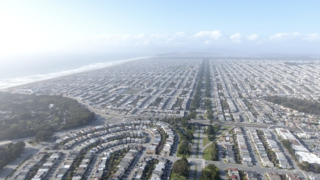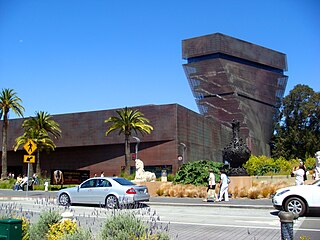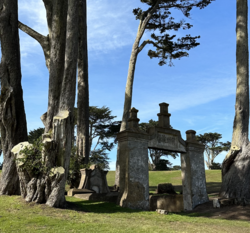
San Francisco, officially the City and County of San Francisco, is the commercial, financial, and cultural center of Northern California. With a population of 808,988 residents as of 2023, San Francisco is the fourth most populous city in the U.S. state of California behind Los Angeles, San Diego, and San Jose. The city covers a land area of 46.9 square miles at the upper end of the San Francisco Peninsula, making it the second-most densely populated major U.S. city behind New York City and the fifth-most densely populated U.S. county, behind four of New York City's boroughs. Among the 92 U.S. cities proper with over 250,000 residents, San Francisco is ranked first by per capita income and sixth by aggregate income as of 2022.As of 2023, the San Jose–San Francisco–Oakland, CA CSA is the 5th largest in the nation, with an approximate population of over 9,001,024.

Treasure Island is an artificial island in San Francisco Bay, and a neighborhood in the City and County of San Francisco. Built in 1936–37 for the 1939 Golden Gate International Exposition, the island was named by Clyde Milner Vandeburg, part of the Fair's public relations team. Its World's Fair site is a California Historical Landmark. Buildings there have been listed on the National Register of Historic Places, and the historical Naval Station Treasure Island, an auxiliary air facility, are designated in the Geographic Names Information System. Treasure Island is connected to Yerba Buena Island, another (natural) auxiliary island of San Francisco, by a causeway, creating access to Interstate 80.

The Sunset District is a neighborhood located in the southwest quadrant of San Francisco, California, United States.

The Legion of Honor, formally known as the California Palace of the Legion of Honor, is an art museum in San Francisco, California. Located in Lincoln Park, the Legion of Honor is a component of the Fine Arts Museums of San Francisco, which also administers the de Young Museum.

Golden Gate Park is an urban park between the Richmond and Sunset districts of San Francisco, California, United States. It is the largest park in the city, containing 1,017 acres (412 ha), and the third-most visited urban park in the United States, with an estimated 24 million visitors annually.

Golden Gate National Cemetery is a United States national cemetery in California, located in the city of San Bruno, 12 miles (20 km) south of San Francisco. Because of the name and location, it is frequently confused with San Francisco National Cemetery, which dates to the 19th century and is in the Presidio of San Francisco, in view of the Golden Gate. Around 1937, San Francisco residents voted to bar the opening of new cemeteries within the city proper and, as a result, the site for the new national cemetery was selected south of the city limits in adjacent San Mateo County.

The San Francisco Columbarium & Funeral Home is a columbarium owned and operated by Dignity Memorial, located at One Loraine Court, near Stanyan and Anza Streets, just north of Golden Gate Park in San Francisco, California. Built in 1898 by architect Bernard J.S. Cahill, the copper-domed Columbarium is an example of neoclassical architecture. It is the only non-denominational burial place within San Francisco's city limits that is open to the public and has space available.

The Fine Arts Museums of San Francisco (FAMSF), comprising the de Young Museum in Golden Gate Park and the Legion of Honor in Lincoln Park, is the largest public arts institution in the city of San Francisco. FAMSF's combined attendance was 1,158,264 visitors in 2022, making it the fifth most attended art institution in the United States.

Lincoln Park is a park in San Francisco, California. It was dedicated to President Abraham Lincoln in 1909 and includes about 100 acres (0.4 km2) of the northwestern corner of the San Francisco Peninsula. Lincoln Park park hosts the Legion of Honor Museum of art and is the western terminus of the Lincoln Highway, the first automobile roadway across the United States of America.
The 49-Mile Scenic Drive is a designated scenic road tour highlighting much of San Francisco, California. It was created in 1938 by the San Francisco Down Town Association to showcase the city's major attractions and natural beauty during the 1939 Golden Gate International Exposition.

Adolph Bernard Spreckels was a California businessman who ran Spreckels Sugar Company and who donated the California Palace of the Legion of Honor art museum to the city of San Francisco in 1924. His wife, Alma, was called the "great grandmother of San Francisco". His 1912 mansion is in Pacific Heights and is San Francisco Landmark #197.

Mount Zion Cemetery/Female Union Band Society Cemetery is a historic cemetery located at 27th Street NW and Mill Road NW in the Georgetown neighborhood of Washington, D.C., in the United States. The cemetery is actually two adjoining burial grounds: the Mount Zion Cemetery and Female Union Band Society Cemetery. Together these cemeteries occupy approximately three and a half acres of land. The property fronts Mill Road NW and overlooks Rock Creek Park to the rear. Mount Zion Cemetery, positioned to the East, is approximately 67,300 square feet in area; the Female Union Band Cemetery, situated to the West, contains approximately 66,500 square feet. Mount Zion Cemetery, founded in 1808 as The Old Methodist Burial Ground, was leased property later sold to Mount Zion United Methodist Church. Although the cemetery buried both White and Black persons since its inception, it served an almost exclusively African American population after 1849. In 1842, the Female Union Band Society purchased the western lot to establish a secular burying ground for African Americans. Both cemeteries were abandoned by 1950.
The following is a timeline of the history of the city of San Francisco, California, United States.

Savannah Memorial Park Cemetery also known as El Monte Memorial Park and the Savannah Pioneer Cemetery is the oldest American non-sectarian cemetery in Southern California. The park is located in Rosemead, California, part of the park is in the neighboring city of El Monte. The park has been in continuous operation since its founding in 1850. Some of the burials may date back into the 1840s before Savannah Memorial Park became a Memorial Park. Savannah Memorial Park was designated a California Historical Landmark on March 6, 2012.

The history of the Jews in San Francisco began with the California Gold Rush in the second half of the 19th-century.

Japanese Cemetery was founded in 1901 and is located at 1300 Hillside Boulevard in Colma, California. This cemetery has brought together the Japanese community in California and has worked with Buddhist, Shinto, and Christian religious organizations.

Lone Mountain Cemetery was a complex of cemeteries in the Lone Mountain neighborhood of San Francisco, California, United States on the land bounded by the present-day California Street, Geary Boulevard, Parker Avenue, and Presidio Avenue. Opened 1854, it eventually comprised Laurel Hill Cemetery, Calvary Cemetery, the Masonic Cemetery, and Odd Fellows Cemetery.

Salem Memorial Park and Garden was founded in 1891, originally as the New Salem Cemetery, and is located at 1711 El Camino Real in Colma, California.



















